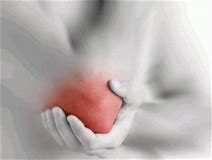 Tennis elbow and Golfer’s elbow are common sports injuries which are the result of a disease of the tendons and ligaments. They also involve the musculature, particularly at the muscular point of insertion. Both Tennis Elbow and Golfer’s Elbow are forms of epicondylitis, an inflammation of tendons that attach to the elbow. The difference between the two conditions lies in where the inflammation is in the elbow. Tennis Elbow affects the lateral, or outside, epicondyle, while Golfer’s Elbow affects the medial, or inside, epicondyle.
Tennis elbow and Golfer’s elbow are common sports injuries which are the result of a disease of the tendons and ligaments. They also involve the musculature, particularly at the muscular point of insertion. Both Tennis Elbow and Golfer’s Elbow are forms of epicondylitis, an inflammation of tendons that attach to the elbow. The difference between the two conditions lies in where the inflammation is in the elbow. Tennis Elbow affects the lateral, or outside, epicondyle, while Golfer’s Elbow affects the medial, or inside, epicondyle.
Epicondylitis is caused by overexertion of the forearm musculature, usually through extreme or repetitive movements, or by overstraining of the affected muscle. It is usually accompanied by strong pain the in the elbow joint radiating out to the upper arm and forearm musculature.
Several studies have shown ESWT to be an effective treatment for radial epicondylitis of the elbow. One study published in 2010 compared the short-term and long-term effects of ESWT and Corticosteroid Injections. Patients receiving corticosteroid injections had significant short-term benefits; however, over time these benefits deteriorated. Patients treated with ESWT had the opposite results. The benefits of ESWT continue long after treatments have ended. After 52 weeks, patients treated with ESWT had an average 73% improvement in pain relief, compared to an average 44.8% improvement in pain relief in patients treated with corticosteroid injections. Patients treated with ESWT had an average 60.9% improvement in functionality, compared to an average 40.9% improvement in functionality in patients treated with corticosteroid injections. Patients treated with ESWT had an average 32.4% improvement in grip strength, compared to an average 11.1% improvement in grip strength in patients treated with corticosteroid injections. Ozturan, KE, Yucel, I, Cakici, H, Guven, M, Sungur, I. Autologous blood and corticosteroid injection and extracoporeal shock wave therapy in the treatment of lateral epicondylitis. Orthopedics. 2010;33(2):84-91.
Another study did a follow-up of Patients treated with ESWT 12-26 months after treatment. 61.4% of patients were complaints free, 29.5% of patients were significantly better, 6.8% of patients were slightly better, and 2.3% of patients were unchanged. Wang CJ, Chen HS. Shock wave therapy for patients with lateral epicondylitis of the elbow: and one- to two-year follow-up study. Am J Sports Med. 2002;30(3):422-5.
Another study measured patient pain before treatment and 6 months post treatment. 78 % of patients had “significant improvement” in pain relief. The Surgeon : Journal of the Royal Colleges of Surgeons of Edinburgh and Ireland 2003;1:290-2.
Make An Appointment
